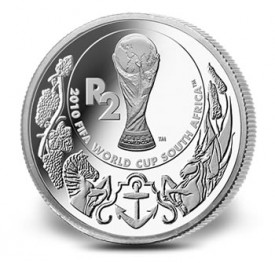A complete set of 1874 Bickford $10 Pattern coins will be exhibited at the American Numismatic Associations Boston Money Show August 11-14th.  The set is part of perhaps the most complete collection of US pattern coins ever assembled and include all seven of the variations attributed according to Judd numbers (US Pattern Coins, Experimental & Trial Pieces by J. Hewitt Judd, Edited by Q. David Bowers), include Judd-1373, one of just two known examples struck in gold. The set is part of perhaps the most complete collection of US pattern coins ever assembled and include all seven of the variations attributed according to Judd numbers (US Pattern Coins, Experimental & Trial Pieces by J. Hewitt Judd, Edited by Q. David Bowers), include Judd-1373, one of just two known examples struck in gold.
Texan Bob Simpson is the ultimate numismatic connoisseur, desiring only those coins that meet his exacting standards. He knows what he wants, and nothing less will do. Facilitating his efforts is his longtime numismatic consultant, Laura Sperber of Legend Numismatics. The old saying, "Know your coins or know your dealer" is particularly apt, as Mr. Simpson knows both, and this relationship has paid off with an epic collection of coins that compares favorably with the great named collections of the past. Mr. Simpson's premier passion is United States pattern and trial coins, and his collection of these is unparalleled. Comprising most of the entries found in Dr. J. Hewitt Judd's standard reference work, United States Pattern Coins, now in its 10th edition, the Simpson Collection is the greatest assemblage of such coins since Judd's own collection was dispersed some 50 years ago. The coins in the collection include the following: The Bickford pattern ten dollar gold pieces, Judd-1373, were not known to numismatists of the 19th century. The design was struck in copper, aluminum, and nickel compositions, as well as gold, with both plain and reeded edges. Examples of the design in copper appeared in various auction catalogs of the period, but even the greatest pattern collections of the era did not include an example of Judd-1373. Robert Coulton Davis published the first important work on U.S. pattern coins in the Coin Collector's Journal in 1885, where he described both plain and reeded edge varieties of the design in copper, but he was unaware of the strikings in other metals.  The issue remained closeted in the early 20th century. A five-page article was published in the Numismatist in July 1906 that described the Bickford patterns in copper, but made no mention of the gold striking. Numismatists remained unaware of the existence of these patterns until the publication of United States Pattern, Trial, and Experimental Pieces, by Edgar Adams and William Woodin in 1913. Listed as number 1366 in that reference, the authors revealed the following information about the gold Bickford pattern eagles for the first time: The issue remained closeted in the early 20th century. A five-page article was published in the Numismatist in July 1906 that described the Bickford patterns in copper, but made no mention of the gold striking. Numismatists remained unaware of the existence of these patterns until the publication of United States Pattern, Trial, and Experimental Pieces, by Edgar Adams and William Woodin in 1913. Listed as number 1366 in that reference, the authors revealed the following information about the gold Bickford pattern eagles for the first time:
"Gold. Reeded Edge. (Only two specimens known in this metal, one of which is in the collection of W.W.C. Wilson of Montreal, Canada, and the other is owned by William H. Woodin of New York City.)" Pattern collectors were amazed to learn of the existence of the familiar Bickford patterns in a precious metal variant, as the copper pieces had been well known since their date of striking. The dramatic tale of their discovery is still being pieced together today. In his United States Gold Patterns (1975) David Akers offers two possible sources for the new patterns. The first scenario involves the activities of William Idler, an old-time coin dealer with particularly good connections at the Mint. Idler's collection was being marketed by his son-in-law, John W. Haseltine, at the time. Alternatively, Akers suggests the coins may have been part of the hoard of patterns William Woodin received in the famous exchange for the gold half union patterns. Origins and Background on the Bickford Design Dana Bickford's proposal for an international coinage captured the public's attention in the mid-1870s. The following article explaining the situation was originally published in The Coin and Stamp Journal in Kansas City, Missouri (February 1876 issue). It has been reprinted in several sources since that time: "The leading journals throughout this country and Europe are discussing the necessity for an 'international coin,' having been aroused to its importance by a resolution offered in the Senate by Senator Sherman. But Mr. Sherman's plan will meet with the same difficulty that our government has contended with for years, viz., to obtain a coin having a relation of value to the present coins of other nations, without having their denominational value and design changed. This difficulty has been overcome, and to Mr. Dana Bickford, of New York City, the original inventor of the automatic knitting machines, belongs the honor. "Mr. Bickford, while traveling in Europe, experienced the difficulties and inconveniences that European travelers are subjected to, of having to provide money current in each country he visited, and at times ignorant of its value in our money. Having upon one occasion been particularly annoyed, he determined, if possible, to overcome the difficulty, and being a man of great inventive capacity, was not long in arriving at his present plan, and designed a coin that shows on its face its value in our money and that of the principal commercial nations of the world. "The United States and foreign governments have endeavored for years, and spent thousands of dollars, to perfect a system of 'international coinage,' but have been unable to get a coin that would prove acceptable to the principal nations, as each one has a peculiar design for its coin, which it is unwilling to change entirely. With Mr. Bickford's coin this difficulty is removed, as each government can fully display its design and value on one side, and on the other show the value of the coin in the currencies of the different nations, also the fineness of the metal and number of grammes without altering their values, and but slightly changing designs. "Shortly after Mr. Bickford returned from Europe he called on Dr. Henry R. Linderman, the director of the Mint, and submitted to him his design for an international coin. After carefully examining it the director was so impressed with its importance, and the great saving the adoption of such a coin would be to our government, that with his usual foresight and penetration he at once ordered sample coins struck off at the Philadelphia Mint, which proved entirely satisfactory and practical. It is not generally known that the annual expense to our government for recoinage and waste on coin entering this country from abroad is half a million dollars, and the same waste and expense is incurred by foreign governments." Unfortunately, Bickford's idea was ahead of its time, and more than a century would pass before his dream was at least partially realized by the euro. Related posts: - Phenomenal Simpson Collection of United States Pattern Coins Helps NGC Launch Plus Designation
- Learning from the Simpson Collection
- Fascinating Collection of Colonial "US Regulated" Gold Coins to be Sold by Heritage in Boston
|

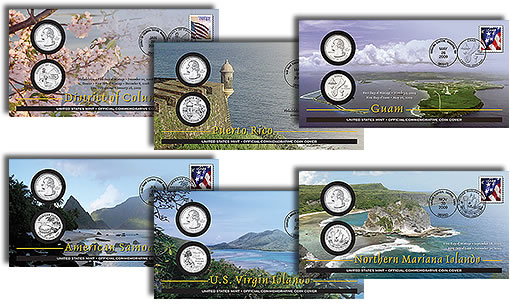
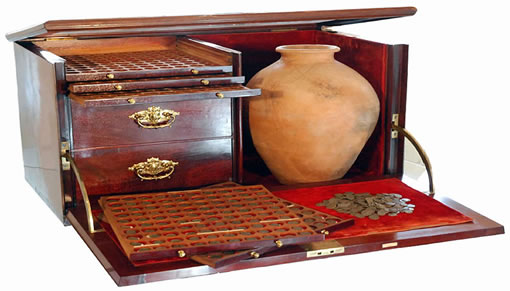
 The coins in this first-ever display are the finer each of the two known 1861 Philadelphia Mint "Paquet Reverse" gold $20, graded NGC MS67, and 1921 Proof Roman Finish Saint-Gaudens Double Eagle, graded NGC SP64.
The coins in this first-ever display are the finer each of the two known 1861 Philadelphia Mint "Paquet Reverse" gold $20, graded NGC MS67, and 1921 Proof Roman Finish Saint-Gaudens Double Eagle, graded NGC SP64. Roman-finish proof gold Double Eagles were struck in 1909 and 1910, but no example of that kind of presentation strike for 1921 Double Eagles was known until only ten years ago when the first one publicly surfaced.
Roman-finish proof gold Double Eagles were struck in 1909 and 1910, but no example of that kind of presentation strike for 1921 Double Eagles was known until only ten years ago when the first one publicly surfaced.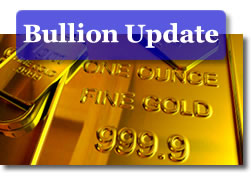 U.S. gold prices edged $3.80 higher Tuesday, marking their third increase in four days as an unexpected drop in U.S. consumer confidence, signs of slower growth in China and continued fears over widening European debt woes boosted the yellow metal's safe-haven appeal.
U.S. gold prices edged $3.80 higher Tuesday, marking their third increase in four days as an unexpected drop in U.S. consumer confidence, signs of slower growth in China and continued fears over widening European debt woes boosted the yellow metal's safe-haven appeal.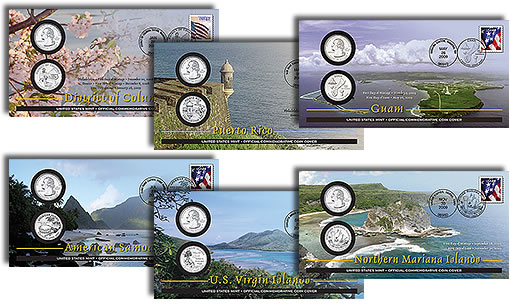
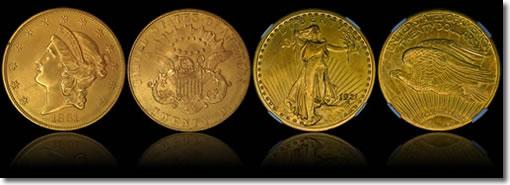
 The design is the same as the regular-issue 1915-S Panama-Pacific commemorative half, but lacking the normal S mintmark. Struck in gold with a reeded edge. Other S-less Panama-Pacific half dollar patterns are also known in silver and copper. These extremely rare patterns were clearly clandestine strikes, produced at the Philadelphia Mint before mintmark punches were applied to the working dies. There are two known examples of the gold half dollar, both struck on cut-down, struck Saint-Gaudens double eagle coins. Similar examples are known of the 1915 Panama-Pacific gold dollar and of the round and octagonal fifty dollar pieces, all lacking the S mintmark. The website
The design is the same as the regular-issue 1915-S Panama-Pacific commemorative half, but lacking the normal S mintmark. Struck in gold with a reeded edge. Other S-less Panama-Pacific half dollar patterns are also known in silver and copper. These extremely rare patterns were clearly clandestine strikes, produced at the Philadelphia Mint before mintmark punches were applied to the working dies. There are two known examples of the gold half dollar, both struck on cut-down, struck Saint-Gaudens double eagle coins. Similar examples are known of the 1915 Panama-Pacific gold dollar and of the round and octagonal fifty dollar pieces, all lacking the S mintmark. The website 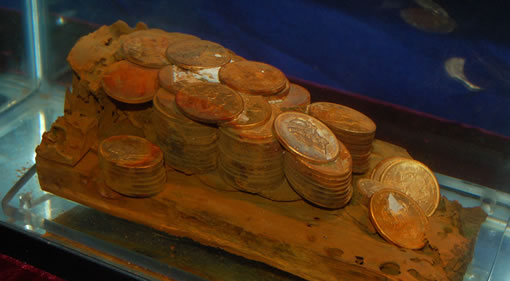
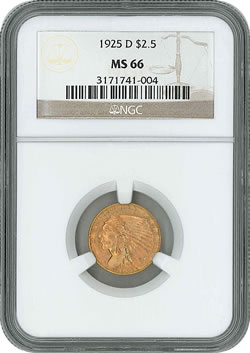

 The set is part of perhaps the most complete collection of US pattern coins ever assembled and include all seven of the variations attributed according to Judd numbers (US Pattern Coins, Experimental & Trial Pieces by J. Hewitt Judd, Edited by Q. David Bowers), include Judd-1373, one of just two known examples struck in gold.
The set is part of perhaps the most complete collection of US pattern coins ever assembled and include all seven of the variations attributed according to Judd numbers (US Pattern Coins, Experimental & Trial Pieces by J. Hewitt Judd, Edited by Q. David Bowers), include Judd-1373, one of just two known examples struck in gold. The issue remained closeted in the early 20th century. A five-page article was published in the Numismatist in July 1906 that described the Bickford patterns in copper, but made no mention of the gold striking. Numismatists remained unaware of the existence of these patterns until the publication of United States Pattern, Trial, and Experimental Pieces, by Edgar Adams and William Woodin in 1913. Listed as number 1366 in that reference, the authors revealed the following information about the gold Bickford pattern eagles for the first time:
The issue remained closeted in the early 20th century. A five-page article was published in the Numismatist in July 1906 that described the Bickford patterns in copper, but made no mention of the gold striking. Numismatists remained unaware of the existence of these patterns until the publication of United States Pattern, Trial, and Experimental Pieces, by Edgar Adams and William Woodin in 1913. Listed as number 1366 in that reference, the authors revealed the following information about the gold Bickford pattern eagles for the first time:
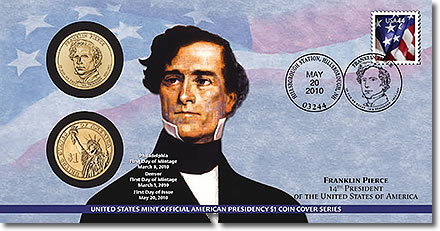
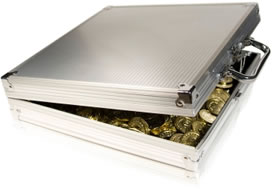 During the last week, there were two more stories of dealers being robbed. One occurred in Wichita Falls, Texas and the other in Parisippany, New Jersey. In both cases, the dealers stopped at a restaurant after the show ended, and had their windows broken to take what was in the car. The incident in Wichita Falls also involved an assault on the dealer and his wife.
During the last week, there were two more stories of dealers being robbed. One occurred in Wichita Falls, Texas and the other in Parisippany, New Jersey. In both cases, the dealers stopped at a restaurant after the show ended, and had their windows broken to take what was in the car. The incident in Wichita Falls also involved an assault on the dealer and his wife.